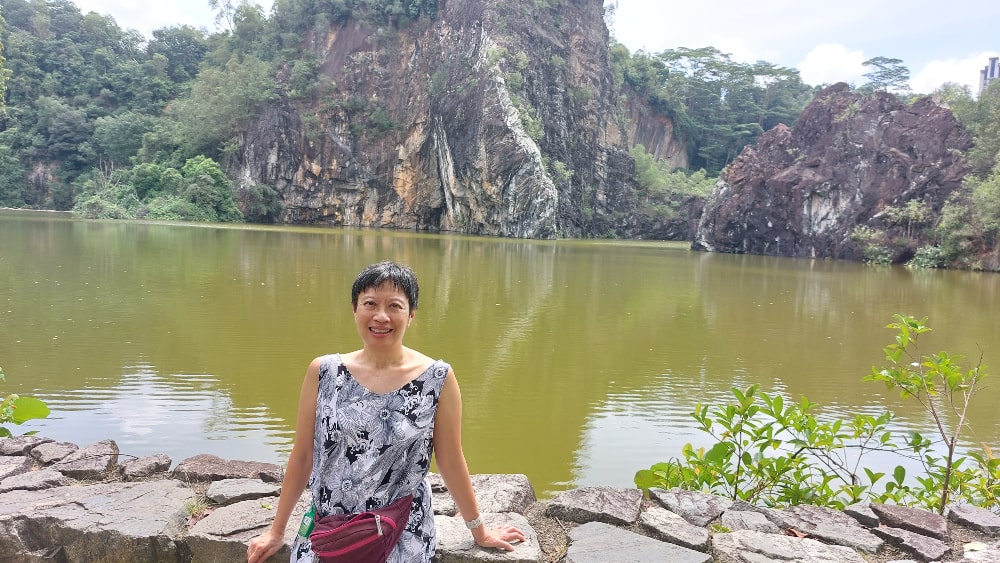
This post was originally published on murderiseverywhere.blogspot.com.
I live on the Western side of Singapore, in Bukit (hill) Batok (cough) so literally, ‘Coughing Hills’. And yes, it was a very good district to spend the Covid shut down!
In the old days pre-World War 2, this place was known as ‘Sleepy Valley’: more peaceful but less interesting… and I must confess I only learned this recently, when I was scouting it out as a potential history mystery murder site! And yes, it certainly looks a good place to hide a body or two…
It seems there’s no consensus on how the name came about.
I’ve been told the colder air here (we’re on the edge of the central mountainous area) makes people prone to coughs and colds. Personally I don’t believe this–we’ve definitely become healthier since moving here because it’s possible to walk and walk outdoors without seeing office blocks or housing estates!
Another explanation is that in the old days, dynamite blasts in nearby quarries made it sound as though the hills were coughing.
The lake in the photo above is ‘Little Guilin’ a former granite quarry.
Gombak Norite was mined here. This norite tests as over ten times stronger than concrete and in the old days there were nine quarries in the area.
Mostly, the Gombak norite rests on top of Singapore’s granite core though in places the granite has pushed up into the norite formation. Some of the these rock formations are millions of years old.
Photo (without me) of the top of the rock.
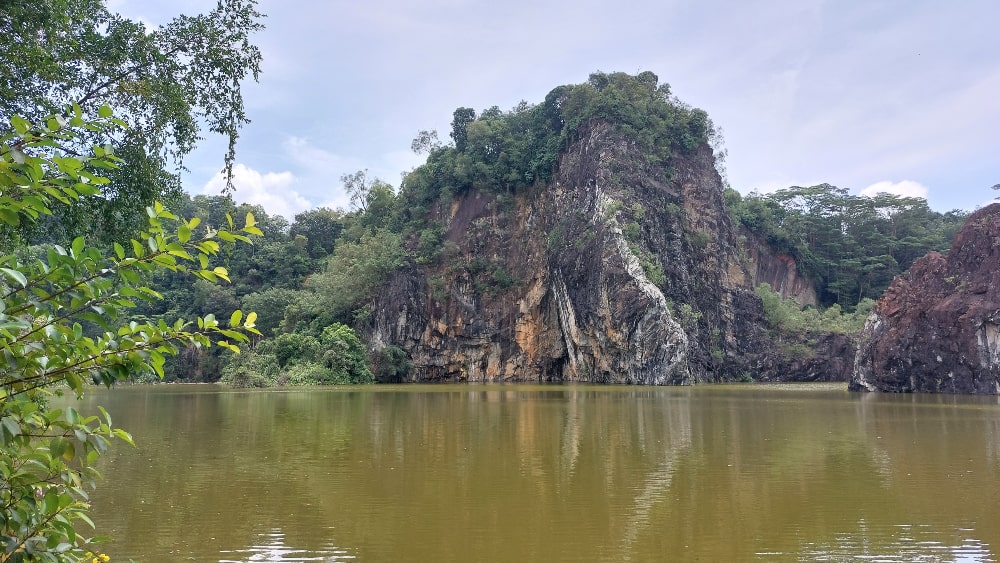
Little Guilin is 133m tall–making it our second tallest hill after Bukit Timah Hill (another huge block of granite) at 163m.
There are stories about these quarries being haunted, either by the spirits of minors who died working there (mining was a risky business with rock falls and dynamite blasts…) or by the nature spirits who were discombobulated by humans moving in.
Stones from these quarries were used for public housing, to stabilise roads and canals and even to build the Istana (the president’s official residence) and the old airport. Fancier stones were reserved for grave stones and cemetery markers because they would last ‘forever’.
But this being Singapore, even the old graveyards have since been dug up and the dead relocated in government managed multi-storey columbaria!
Walking around the area you’ll often see offerings of flowers, sweets, fruit or rice. Growing up, I remember being told these makeshift shrines with offerings ‘means that something bad happened here’. It’s hoped the food will comfort the wandering spirits till they are ready to move on.
The birds, bugs, bats and monkeys take care of any leftovers!
This is the quarry in the Bukit Batok Nature Reserve, just across the road from where I live.
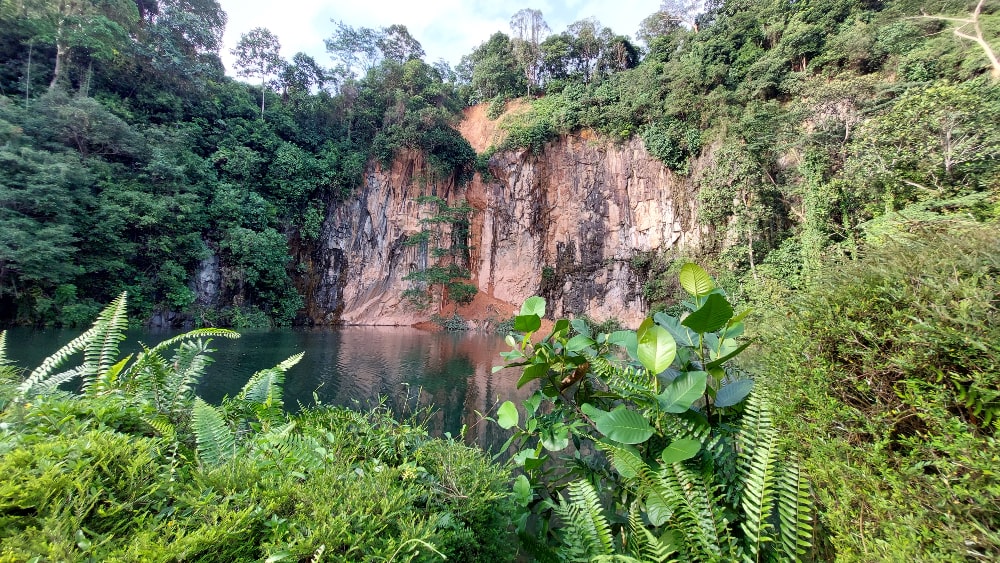
I love the greenery that still flourishes here, along with the wildlife it attracts and supports.
But though it looks peaceful now, some of the fiercest fighting (that resulted in the British surrendering us to the Japanese) took place near here. And the Japanese Army’s headquarters was located in the Ford Motor Company Factory (now an exhibition gallery showcasing life in Singapore under the Japanese) just down the hill and to the left.
During the Japanese Occupation, a 40 foot tall Syonan Chureito was erected here to commemorate the Japanese soldiers who died. This memorial was destroyed by the Japanese before they surrendered, to prevent it from being desecrated.
Today all that remains is 120 steps leading up to the red and white transmission tower that stands where the shrine once was.
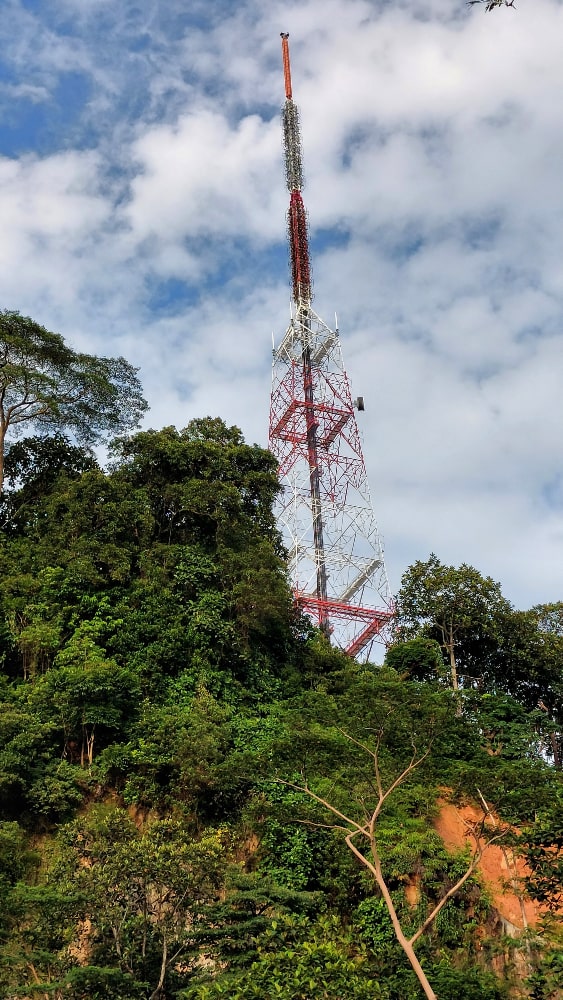
This place makes me think about ugliness morphing into lush greenery and vegetation and how the apparently ephemeral seems to survive manmade monuments designed to last ‘forever’.
Like the jungle fowl and the mushrooms–it’s always a joy to spot new mushrooms obviously related to some you’ve seen weeks or months ago!
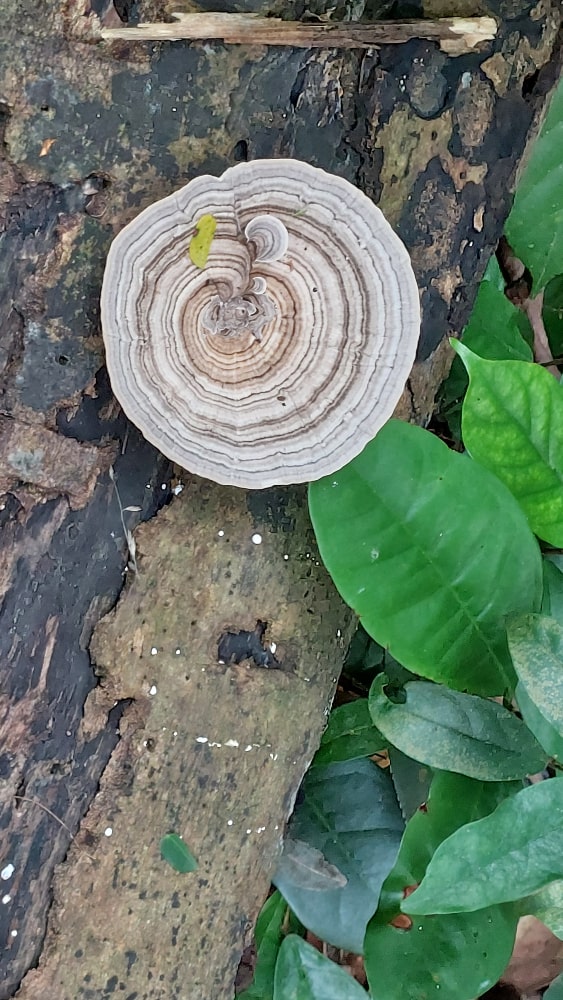
The oldest rocks here, at Pulau Tekong’s Sajahat Formation, are an estimated 300 million years old. Compared to that, we with our wars and memorials are as evanescent as the angsana tree blossoms that last only one day.
Yes, I was trying to anchor the setting for my next history mystery but now I’d really like to research and write something about the trees and plants and fish and bugs here–along with the spirits trapped in the quarry lakes!
